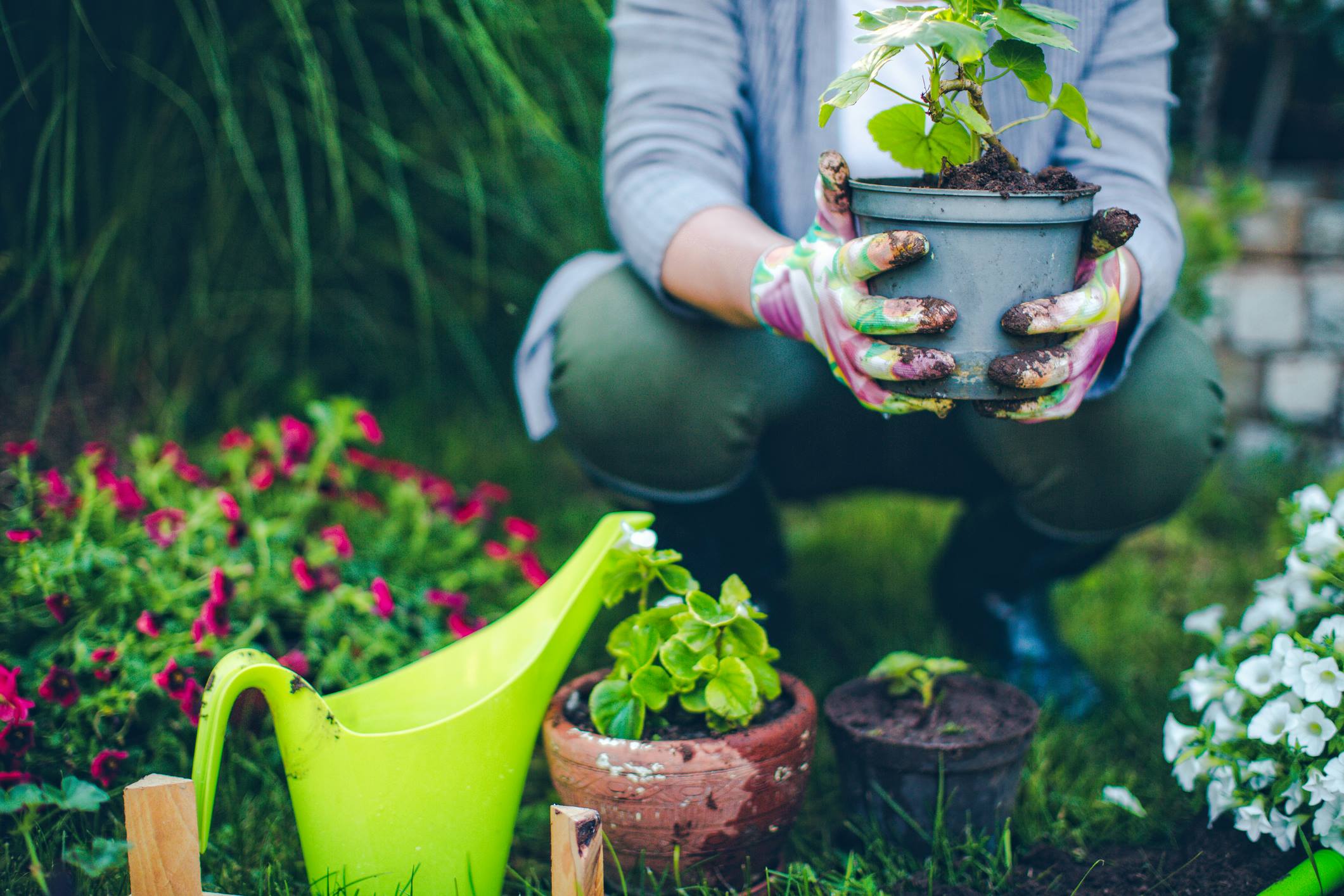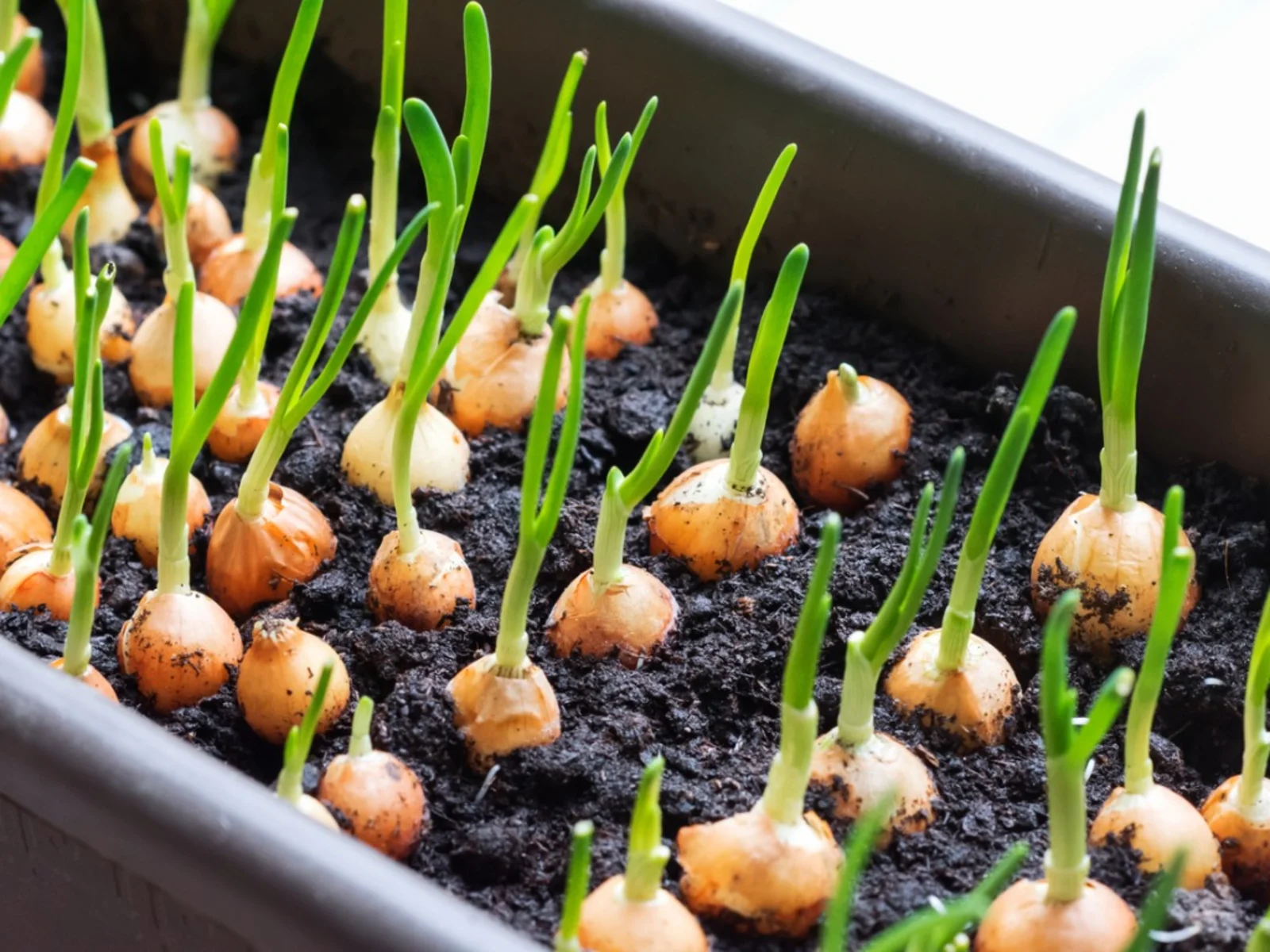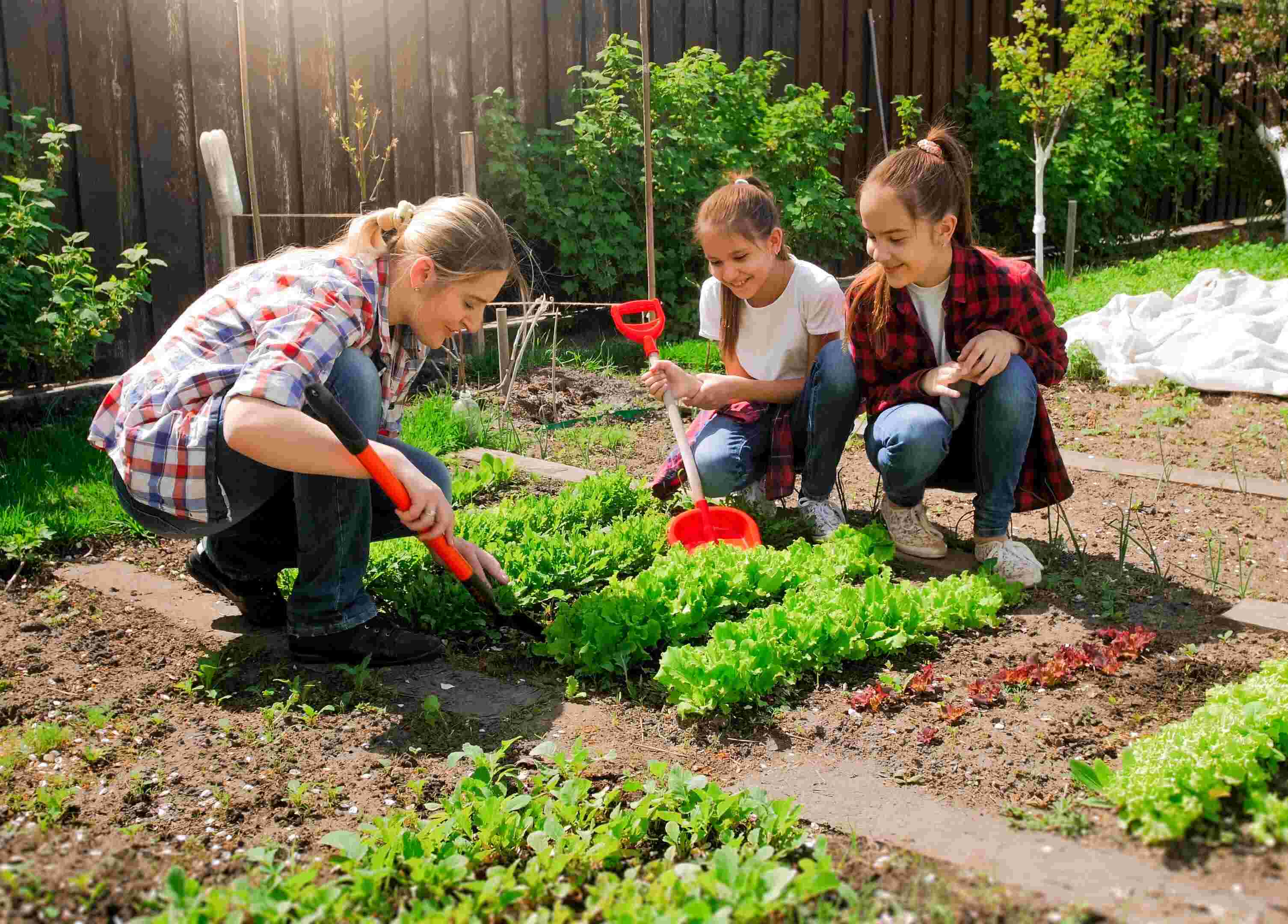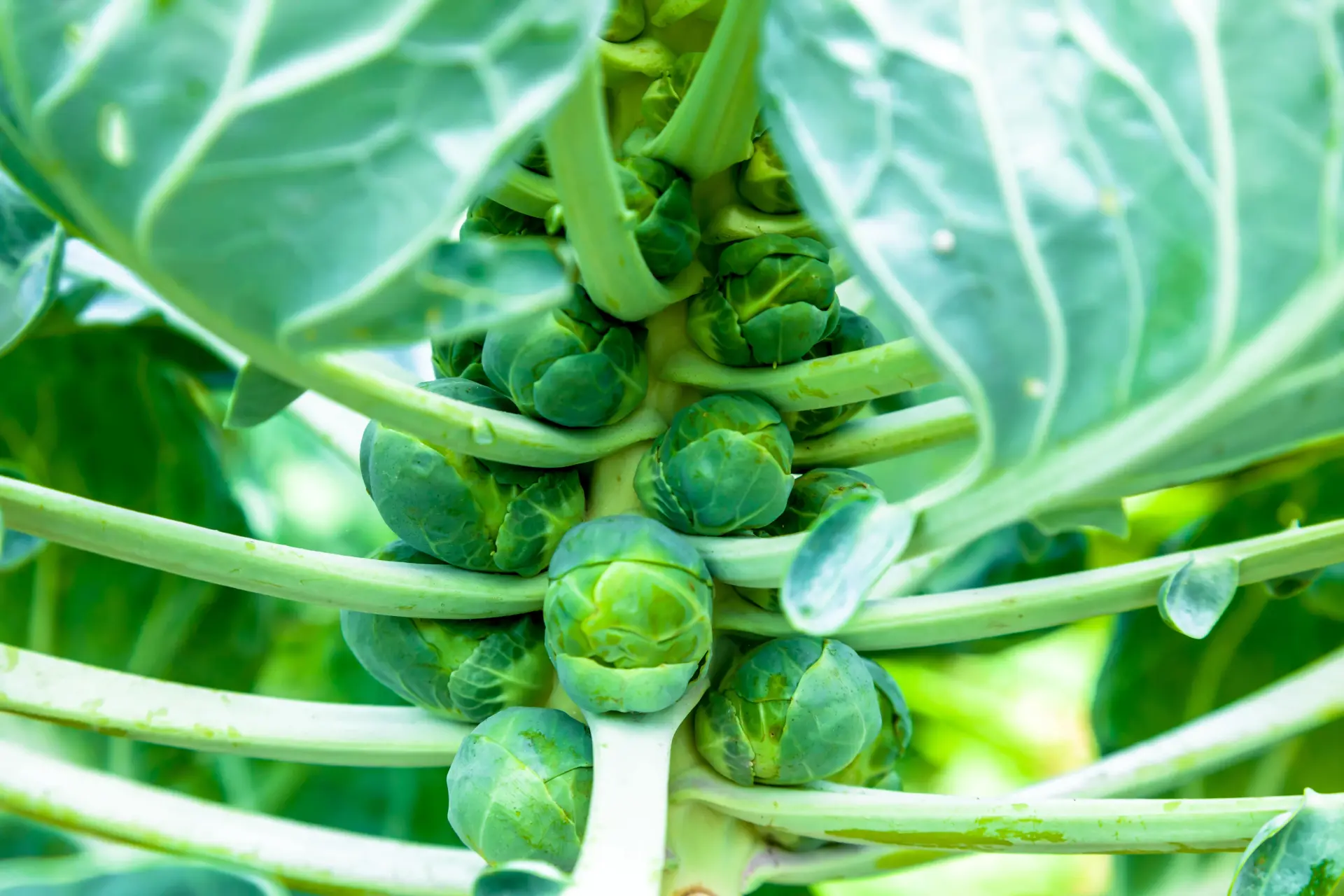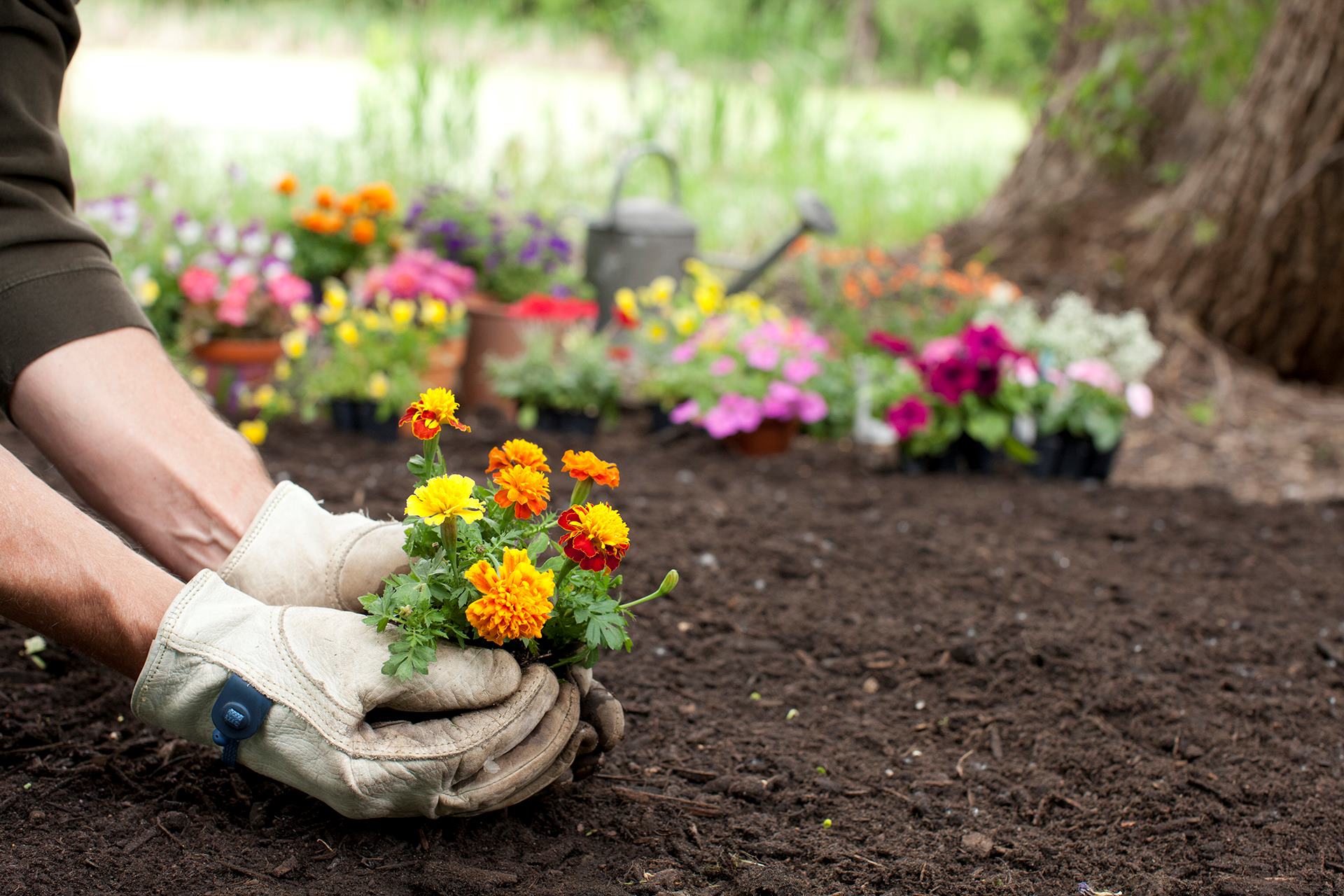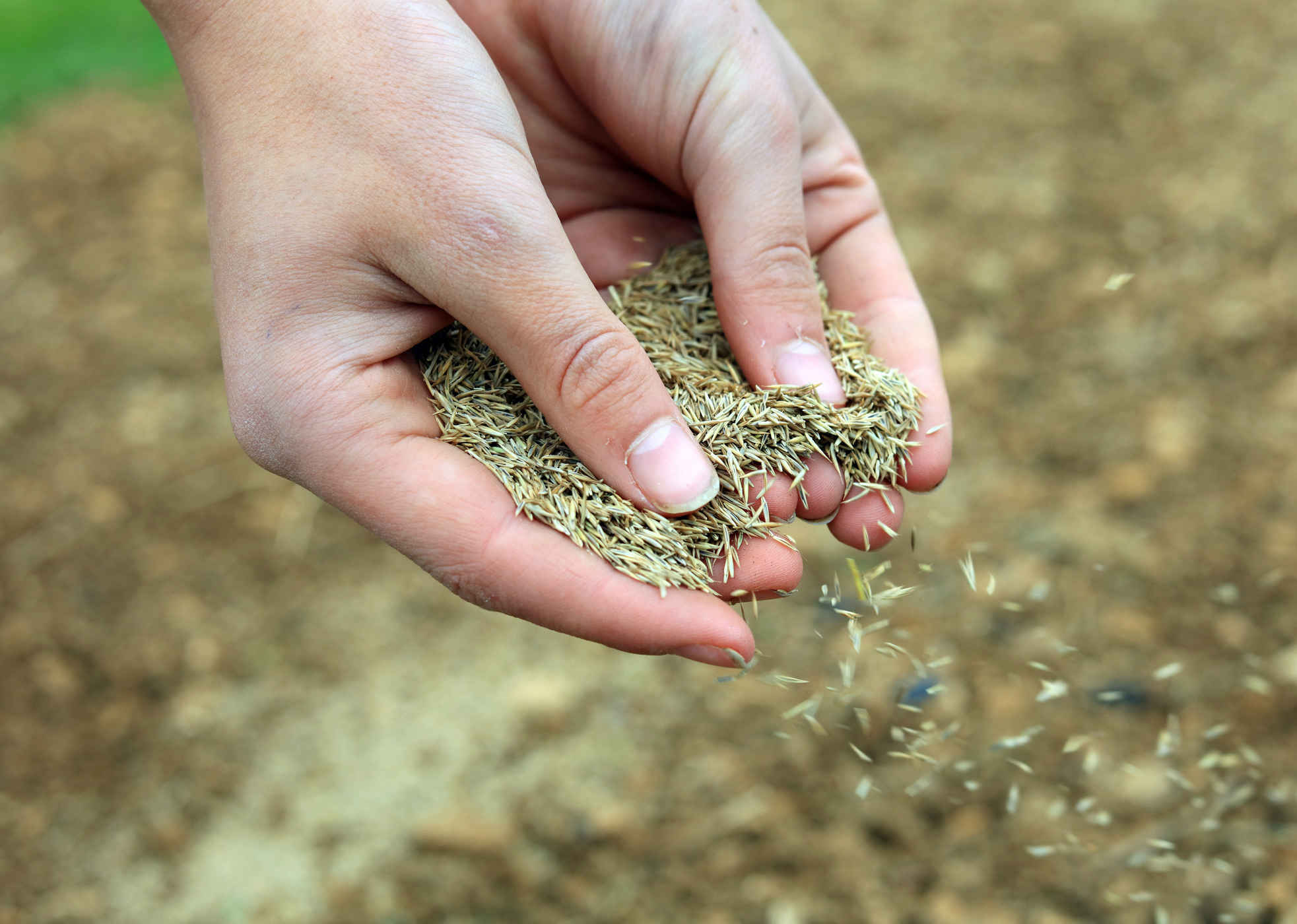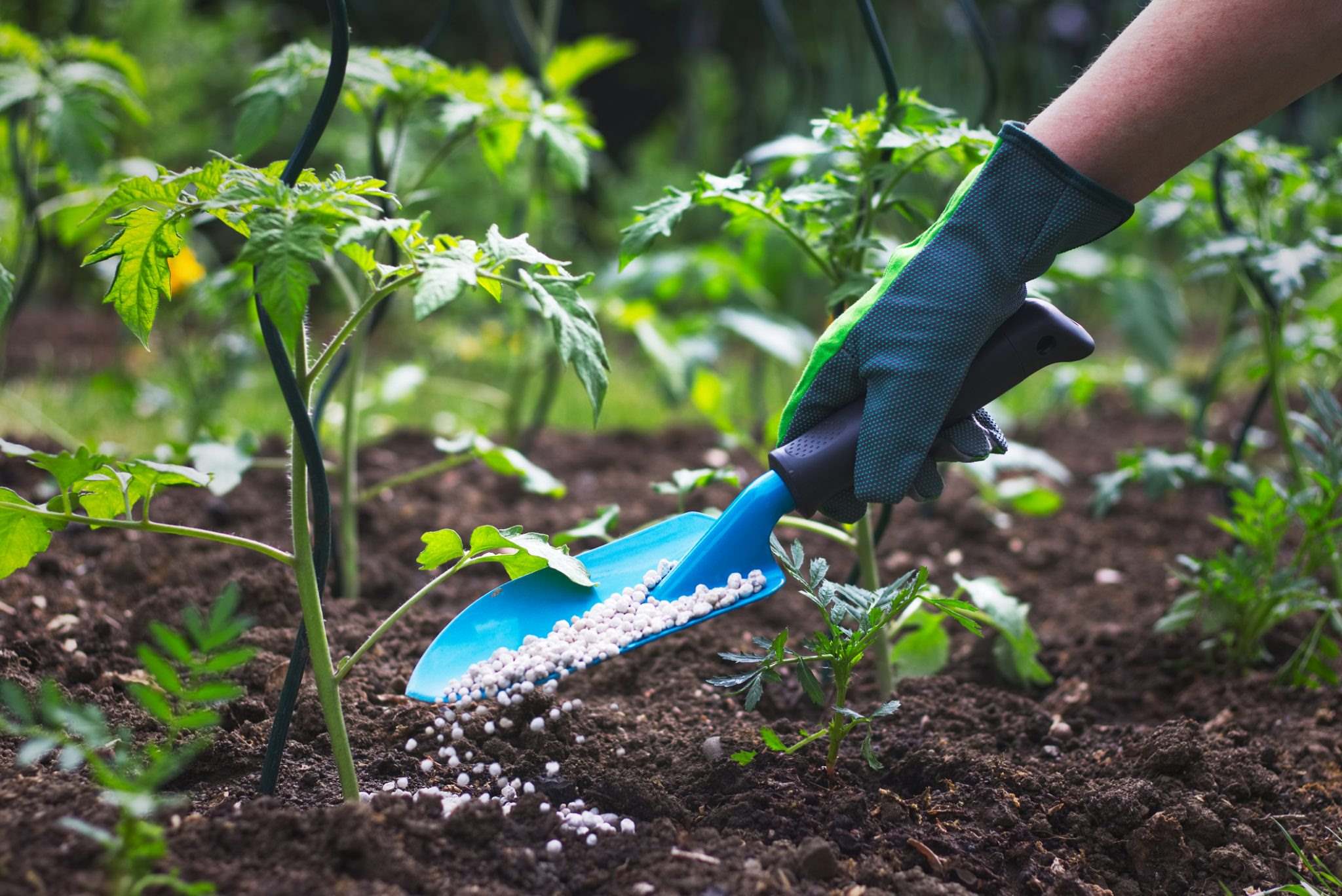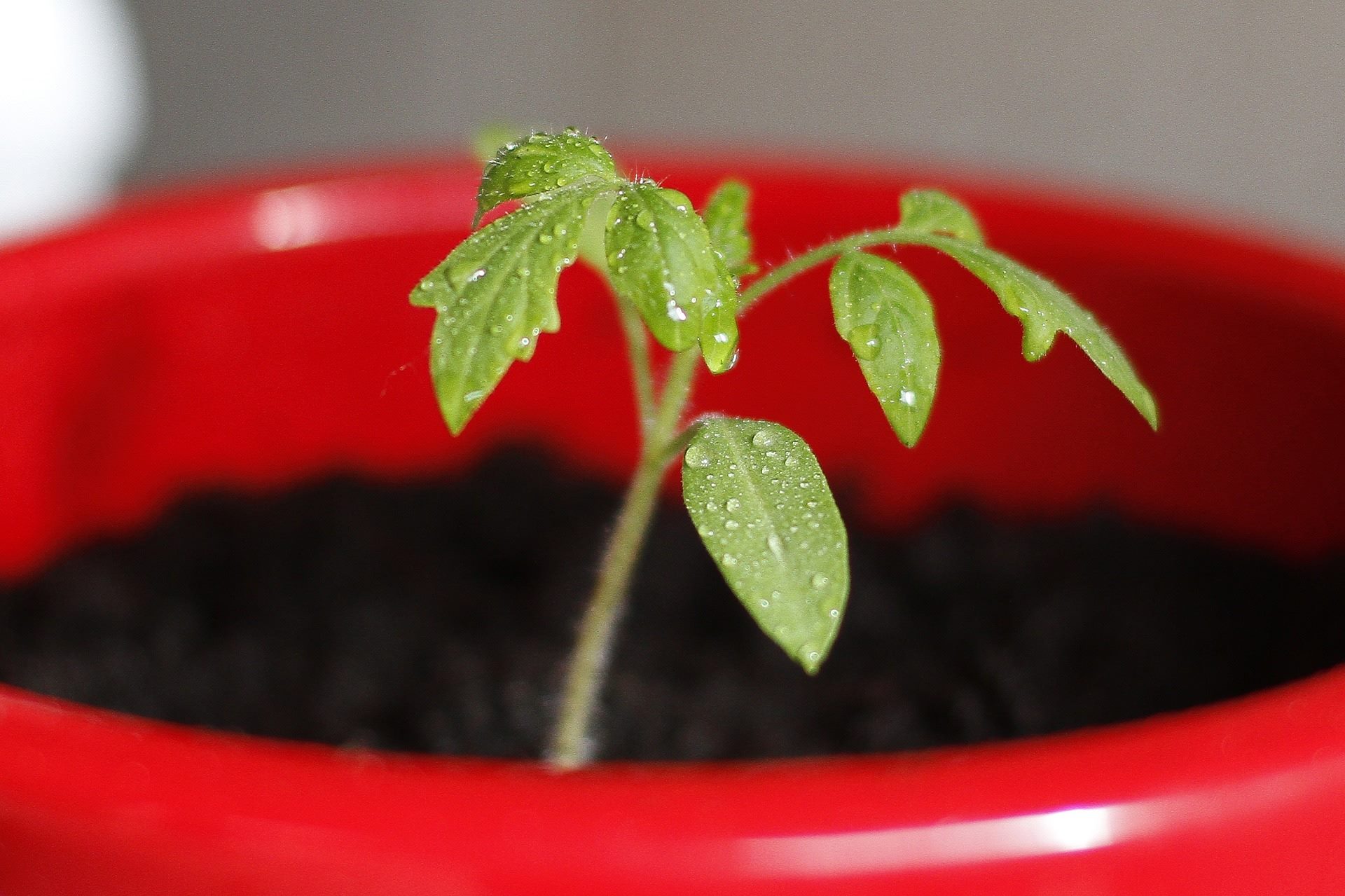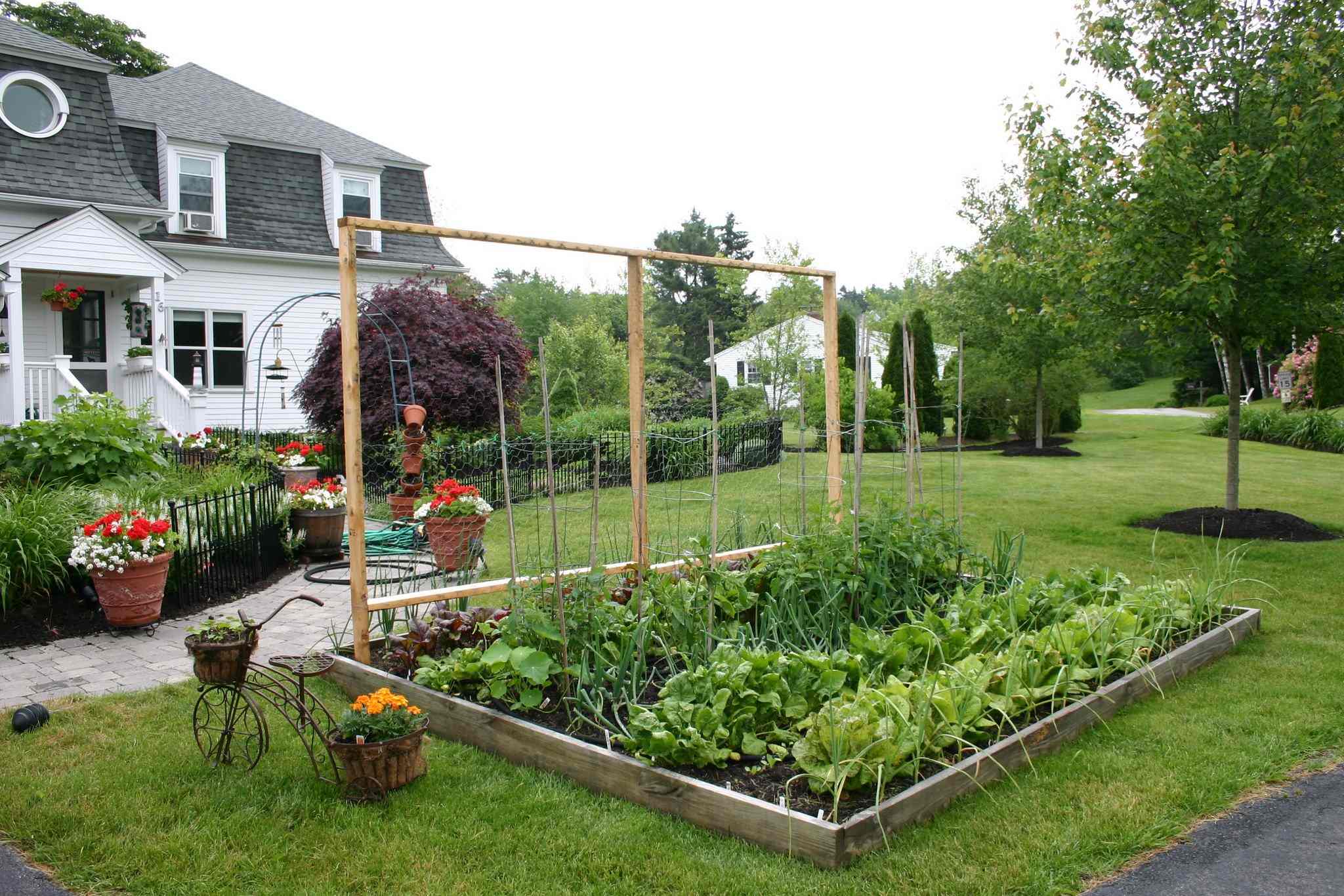Home>Types of Gardening>Edible Gardening>When To Start Planting Tomato Seeds
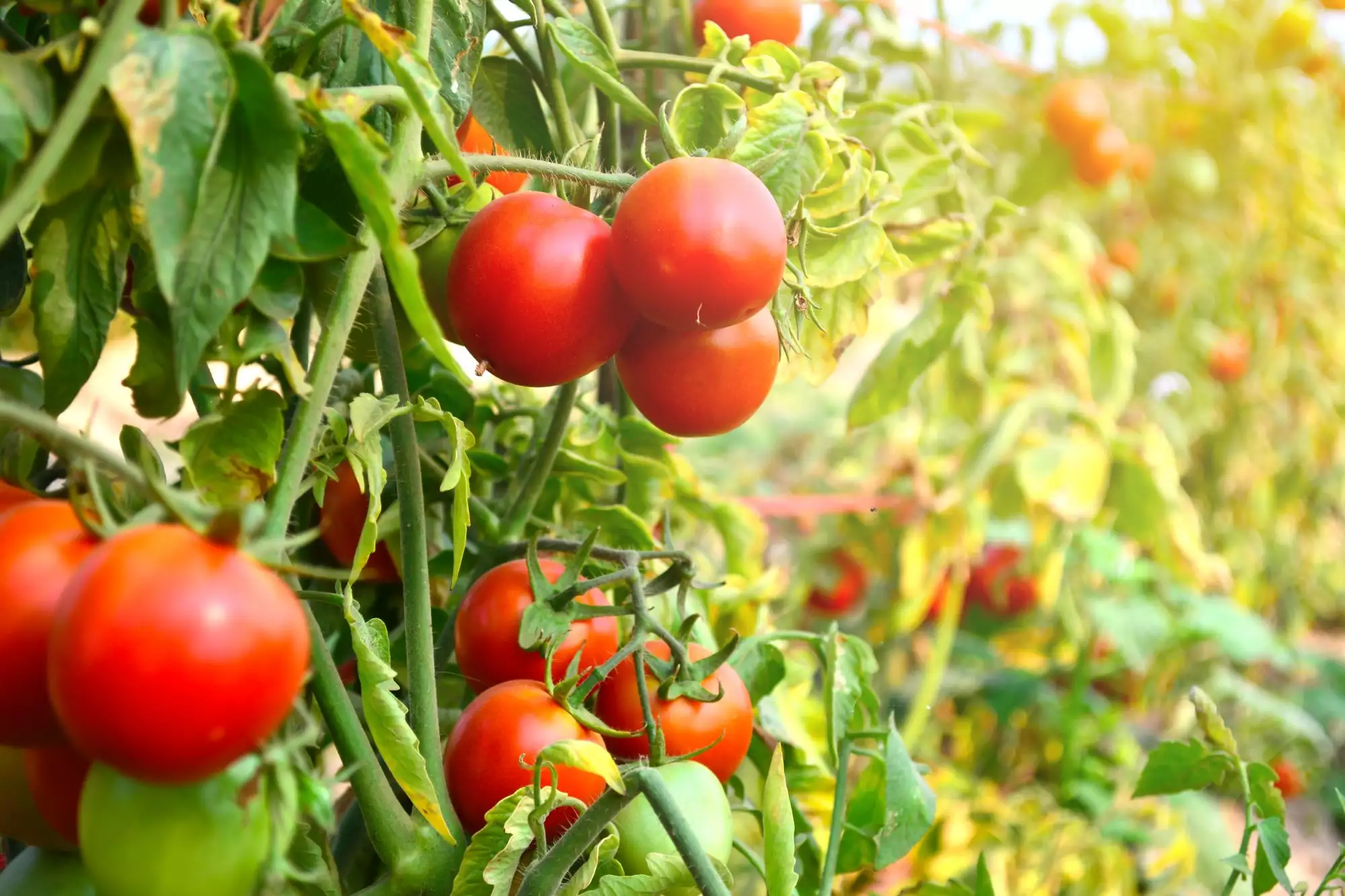

Edible Gardening
When To Start Planting Tomato Seeds
Modified: February 9, 2024
Learn when to start planting tomato seeds for your edible gardening needs. Maximize your success with our helpful tips and guidelines.
(Many of the links in this article redirect to a specific reviewed product. Your purchase of these products through affiliate links helps to generate commission for Chicagolandgardening.com, at no extra cost. Learn more)
Table of Contents
Introduction
Edible gardening is a rewarding and fulfilling hobby that allows you to grow your own fresh produce right in your backyard or even in containers on your balcony. Among the numerous vegetables and fruits you can grow, tomatoes are an absolute favorite for many gardeners. Not only do they add flavor and versatility to a wide range of dishes, but they are also relatively easy to grow.
When it comes to growing tomatoes, starting from seeds can be a cost-effective and rewarding option. However, knowing when to start planting tomato seeds is crucial to ensure successful germination and healthy growth. In this article, we will explore the factors to consider, the optimal time, and the steps for planting tomato seeds.
Before delving into the specifics, it’s important to note that different regions and climates may have varying recommendations for planting tomatoes. Therefore, it’s always advisable to consult your local agricultural extension office or experienced gardeners in your area for guidance tailored to your location.
Factors to Consider Before Planting Tomato Seeds
Before you start planting tomato seeds, there are a few factors you need to take into consideration to ensure the best possible results:
- Climate: Tomatoes are warm-season plants that thrive in temperatures between 70-85°F (21-29°C). It’s important to determine your region’s average last frost date, as tomatoes are sensitive to frost. Planting too early can lead to frost damage, while planting too late may not give tomatoes sufficient time to ripen before the first frost in the fall.
- Soil Conditions: Tomatoes prefer well-draining, loamy soil with a pH level of around 6-7. If your soil is heavy and clayey, you can amend it with organic matter like compost to improve drainage and fertility.
- Sunlight: Tomatoes need at least six to eight hours of direct sunlight daily for optimal growth and fruit production. Make sure to plant them in a location where they can receive ample sunlight throughout the day.
- Space availability: Tomato plants can grow quite large, so it’s essential to ensure you have enough space in your garden or containers for their growth. Consider their mature height and width when planning their placement.
- Companion plants: Some plants, like basil, marigold, and borage, can benefit tomatoes by repelling pests or attracting beneficial insects. Research companion plants that can support the growth of your tomato plants.
- Variety selection: There are various tomato varieties available, each with its own characteristics and requirements. Consider factors such as growth habit (determinate or indeterminate), disease resistance, and flavor profiles when selecting a variety that suits your preferences and growing conditions.
Taking these factors into account will help you create the ideal growing environment for your tomato plants and maximize your chances of a successful harvest.
Optimal Time for Planting Tomato Seeds
Timing is crucial when it comes to planting tomato seeds. The optimal time to plant tomato seeds will depend on both your region’s climate and the specific variety you are growing. Here are some general guidelines:
Indoor Seed Starting: For many gardeners, starting tomato seeds indoors is a common practice. This allows you to give the plants a head start before transplanting them outdoors. Begin by calculating the desired transplant date, which is typically after the last expected frost. Count back 6-8 weeks to determine the ideal indoor seed starting date.
Direct Sowing: If you live in a region with a longer growing season and mild winters, you may choose to direct sow tomato seeds outdoors. In this case, the optimal time to sow the seeds is when the soil temperature consistently reaches a minimum of 60°F (15.6°C). Check with your local extension office for guidance on the average soil temperature in your area.
Transplanting: Once the seedlings have grown to a height of about 6 inches and have developed a few sets of true leaves, they are ready to be transplanted into the garden or larger containers. Make sure to harden off the seedlings by gradually exposing them to outdoor conditions for about a week before transplanting. This helps them acclimatize to the sunlight, wind, and temperature fluctuations.
Remember to adjust the planting schedule according to the recommended dates for your specific tomato variety and your local climate. By timing the planting correctly, you can help ensure that your tomato plants have sufficient warm weather to grow, produce blossoms, and set fruit.
Steps for Planting Tomato Seeds
Planting tomato seeds is a straightforward process that can be divided into a few simple steps. Follow these guidelines to ensure successful germination and healthy growth:
- Prepare the soil: Choose a well-draining location in your garden or fill containers with high-quality potting mix. Remove any weeds or debris, and loosen the soil to a depth of about 6-8 inches.
- Sow the seeds: Plant the tomato seeds about ¼ inch deep in the soil, spaced about 2-3 inches apart. If planting in rows, maintain a spacing of 18-24 inches between the rows.
- Water the seeds: Gently water the soil to ensure moisture reaches the seeds. Be careful not to overwater, as excessive moisture can lead to rotting. Use a fine mist or a watering can with a rose attachment to prevent displacement of the seeds.
- Provide warmth: Tomato seeds require warm temperatures to germinate. To speed up the process, consider using a seedling heat mat or placing the trays in a warm location, such as on top of the refrigerator or near a heat source.
- Monitor moisture: Keep the soil evenly moist but not waterlogged during the germination period. Check the moisture level regularly and water as needed.
- Provide light: Once the seeds have sprouted, place them under a grow light or in a location with bright, indirect sunlight. Maintain a temperature of around 75°F (24°C) during the day and slightly cooler at night.
- Thin and transplant the seedlings: As the seedlings grow, thin them out if needed, leaving only the strongest ones to continue growing. When the seedlings are 6-8 inches tall and the danger of frost has passed, transplant them into the garden or larger containers.
By following these steps and providing the necessary care, you can set your tomato seedlings up for healthy growth and a bountiful harvest.
Tips for Successful Tomato Seed Planting
Planting tomato seeds can be a rewarding experience, and here are some tips to ensure success:
- Choose high-quality seeds: Select reputable seed suppliers and look for fresh, viable seeds. Check the seed packet for the variety’s specific instructions and any special considerations.
- Pre-soak the seeds: Some gardeners find it helpful to pre-soak tomato seeds in warm water for a few hours before sowing. This can help soften the seed coat and promote faster germination.
- Use seed starting mix: Opt for a light and sterile seed starting mix to provide optimal conditions for seed germination. Avoid using heavy garden soil or potting mix, as they may impede germination or promote diseases.
- Label your trays: It’s essential to label your trays or pots with the tomato variety and planting date. This will help you keep track of different varieties and their growth progress.
- Provide good air circulation: Proper air circulation helps prevent the development of fungal diseases. Use a small fan or open a nearby window to ensure adequate air movement around the seedlings.
- Avoid overwatering: Most tomato seeds and seedlings are sensitive to excessive moisture. Water the soil when it feels slightly dry to the touch, but avoid saturating it. Ensure any excess water can drain away freely.
- Harden off seedlings: Before transferring the seedlings outside, gradually acclimate them to outdoor conditions. Start by placing them outside for a few hours a day, gradually increasing the duration and exposure to direct sunlight over a week or so.
- Protect seedlings from harsh weather: If there is a sudden drop in temperature or an unexpected frost, protect your young seedlings by covering them with a frost blanket or bringing them indoors temporarily.
- Maintain consistent care: Regularly monitor the seedlings for signs of pests or diseases and take immediate action to address any issues. Provide support, such as stakes or cages, as your tomato plants grow to keep them upright and prevent breakage.
- Prune and train: As the tomato plants grow, it’s beneficial to prune away the suckers (side shoots) that develop in the leaf axils. This helps to focus the plant’s energy on fruit production. Additionally, gently train the main stem onto a support structure to keep the plant organized.
By implementing these tips, you’ll increase your chances of successful tomato seed planting and enjoy a productive and thriving tomato harvest.
Common Mistakes to Avoid when Planting Tomato Seeds
While planting tomato seeds is a relatively simple process, there are some common mistakes that can hinder their growth and development. Here are a few mistakes to avoid:
- Planting too early: Planting tomato seeds outdoors too early can expose them to cold temperatures and frost, which can damage or kill the young seedlings. Ensure you wait until the soil has warmed up and the danger of frost has passed before planting.
- Overcrowding: Planting tomato seeds too close together can lead to overcrowding, restricted airflow, and increased risk of disease. Follow the recommended spacing guidelines for the specific variety you’re planting to ensure adequate room for growth.
- Overwatering: Tomato seeds and seedlings are susceptible to rot and damping-off disease when exposed to excessive moisture. Avoid overwatering by allowing the soil to dry out slightly between watering sessions.
- Underwatering: On the flip side, failing to provide enough water can result in stunted growth and weak plants. Monitor the moisture levels regularly and water the seedlings when the top inch of soil feels dry.
- Planting too deep: Tomato seeds should not be planted too deep as they require light to germinate. Plant them at a depth of about ¼ inch, ensuring they are covered lightly with soil and receive adequate sunlight.
- Neglecting hardening off: Transferring seedlings directly from an indoor environment to outdoor conditions without acclimating them can lead to shock and damage. Gradually expose seedlings to outdoor conditions over a week, starting with a few hours a day and gradually increasing the duration.
- Failing to provide support: Tomato plants can grow tall and heavy, especially indeterminate varieties. Failing to provide proper support, such as stakes or cages, can result in bent or broken stems, reduced air circulation, and decreased fruit production.
- Ignoring soil quality: Tomatoes thrive in well-draining soil with good fertility. Neglecting to amend the soil with organic matter or failing to maintain proper pH levels can impact plant growth and nutrient uptake.
- Not rotating crops: Planting tomatoes in the same location year after year can lead to a buildup of soil-borne diseases and pests. Practice crop rotation by switching the planting location of your tomatoes every year.
- Skipping regular maintenance: Regular pruning, removing suckers, and monitoring for pests and diseases are important maintenance practices for tomato plants. Neglecting these tasks can result in reduced fruit production and increased susceptibility to issues.
By avoiding these common mistakes, you’ll increase the chances of success and enjoy healthy, productive tomato plants in your garden.
Conclusion
Growing tomatoes from seeds can be a rewarding and fulfilling experience. By considering factors such as climate, soil conditions, and sunlight, you can determine the optimal time for planting tomato seeds and create an ideal growing environment for your plants.
By following the steps for planting tomato seeds, such as preparing the soil, sowing the seeds at the right depth, and providing proper care, you can set your seedlings on a path to healthy growth and fruitful harvests.
Remember to incorporate the tips mentioned to ensure successful tomato seed planting. Choosing high-quality seeds, providing good air circulation, and avoiding the common mistakes can greatly increase your chances of success.
Whether you choose to start your seeds indoors or directly sow them outdoors, with proper care and attention, you’ll be rewarded with delicious homegrown tomatoes that will enhance your culinary creations.
So, get your hands dirty, enjoy the process, and reap the delicious rewards of your efforts as you watch your tomato seeds grow into thriving plants in your own edible garden.
